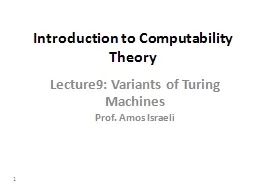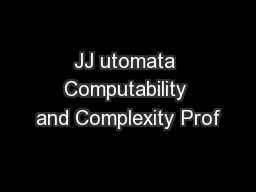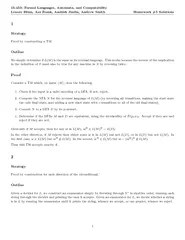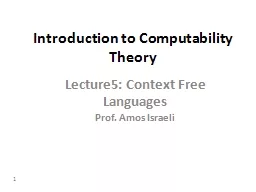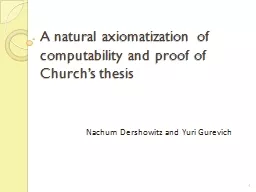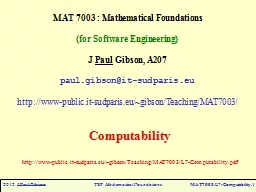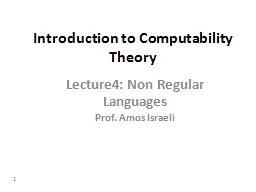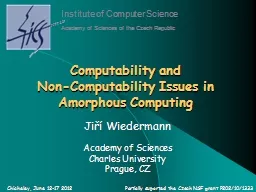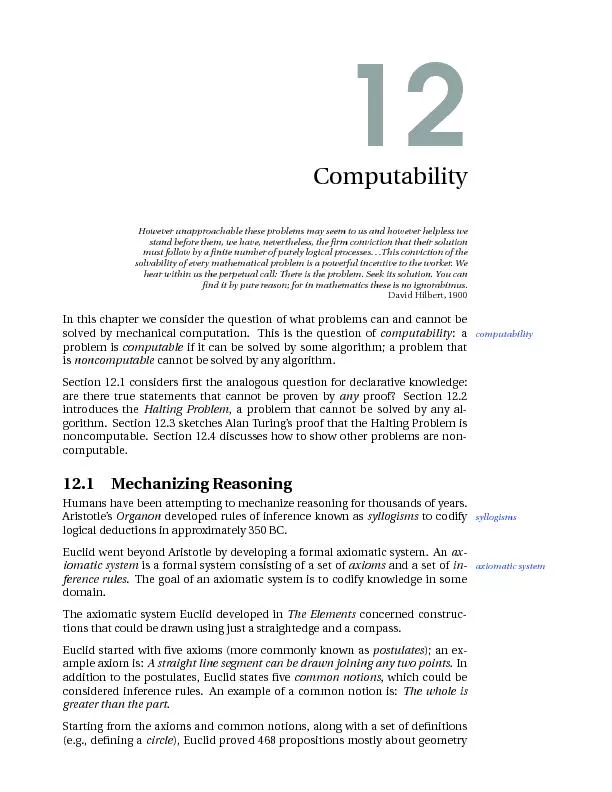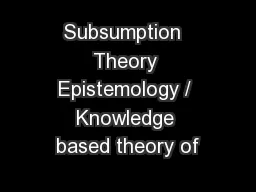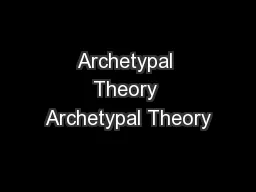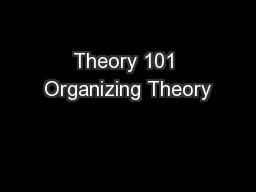PPT-1 Introduction to Computability Theory
Author : pamella-moone | Published Date : 2018-10-27
Lecture9 Variants of Turing Machines Prof Amos Israeli There are many alternative definitions of Turing machines Those are called variants of the original Turing
Presentation Embed Code
Download Presentation
Download Presentation The PPT/PDF document "1 Introduction to Computability Theory" is the property of its rightful owner. Permission is granted to download and print the materials on this website for personal, non-commercial use only, and to display it on your personal computer provided you do not modify the materials and that you retain all copyright notices contained in the materials. By downloading content from our website, you accept the terms of this agreement.
1 Introduction to Computability Theory: Transcript
Download Rules Of Document
"1 Introduction to Computability Theory"The content belongs to its owner. You may download and print it for personal use, without modification, and keep all copyright notices. By downloading, you agree to these terms.
Related Documents

